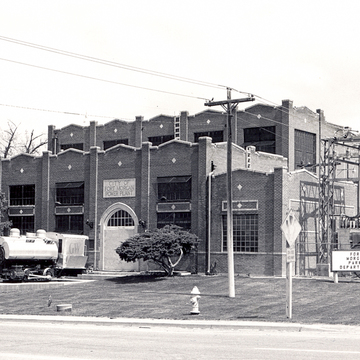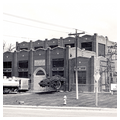The original municipal power plant and its huge black stack, built next to City Hall, were an eyesore, so city superintendent George Cox, a civil engineer, designed this state-of-the-art plant in a park setting. Cox sheathed his concrete post-and-beam structure with curtain walls of red and buff brick and a Tudor arch entry. Stone-capped pediments and pilasters with inset terracotta diamonds add Art Deco stylishness to a handsome facade. The building has a matching stepped rear addition, also designed by Cox. Many generous, symmetrically placed steel windows amplify the plant's light, open modernity. Since being replaced in 1952, it has been used as maintenance, storage, and offices by the Fort Morgan Parks Department. The well-preserved and landscaped plant is at the entrance of a large park located between I-76 and the South Platte River at the Rainbow Arch Bridge.
You are here
Fort Morgan Power Plant
If SAH Archipedia has been useful to you, please consider supporting it.
SAH Archipedia tells the story of the United States through its buildings, landscapes, and cities. This freely available resource empowers the public with authoritative knowledge that deepens their understanding and appreciation of the built environment. But the Society of Architectural Historians, which created SAH Archipedia with University of Virginia Press, needs your support to maintain the high-caliber research, writing, photography, cartography, editing, design, and programming that make SAH Archipedia a trusted online resource available to all who value the history of place, heritage tourism, and learning.

















